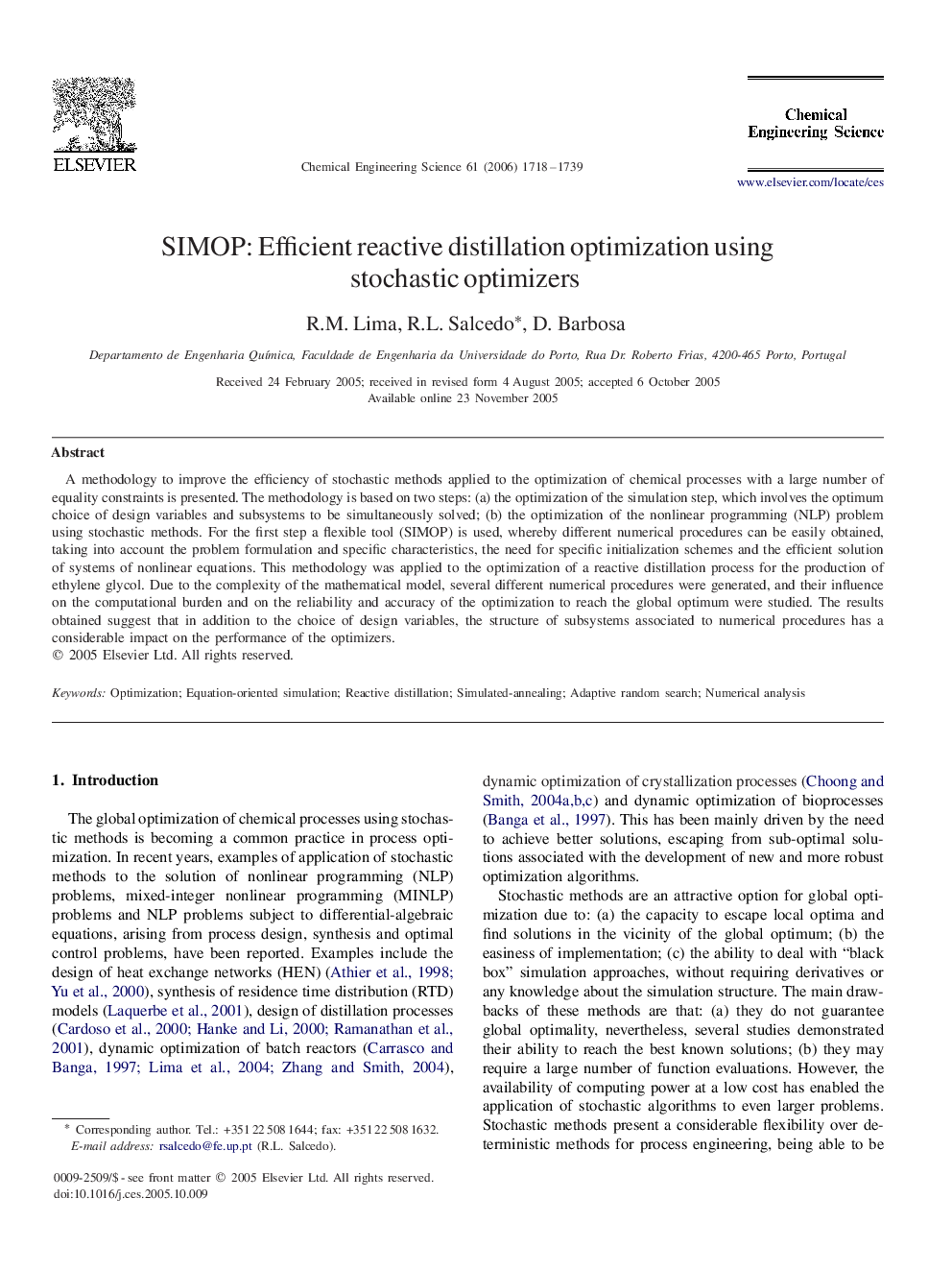| Article ID | Journal | Published Year | Pages | File Type |
|---|---|---|---|---|
| 159990 | Chemical Engineering Science | 2006 | 22 Pages |
Abstract
A methodology to improve the efficiency of stochastic methods applied to the optimization of chemical processes with a large number of equality constraints is presented. The methodology is based on two steps: (a) the optimization of the simulation step, which involves the optimum choice of design variables and subsystems to be simultaneously solved; (b) the optimization of the nonlinear programming (NLP) problem using stochastic methods. For the first step a flexible tool (SIMOP) is used, whereby different numerical procedures can be easily obtained, taking into account the problem formulation and specific characteristics, the need for specific initialization schemes and the efficient solution of systems of nonlinear equations. This methodology was applied to the optimization of a reactive distillation process for the production of ethylene glycol. Due to the complexity of the mathematical model, several different numerical procedures were generated, and their influence on the computational burden and on the reliability and accuracy of the optimization to reach the global optimum were studied. The results obtained suggest that in addition to the choice of design variables, the structure of subsystems associated to numerical procedures has a considerable impact on the performance of the optimizers.
Keywords
Related Topics
Physical Sciences and Engineering
Chemical Engineering
Chemical Engineering (General)
Authors
R.M. Lima, R.L. Salcedo, D. Barbosa,
